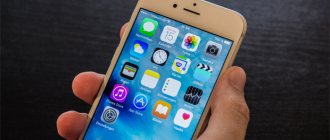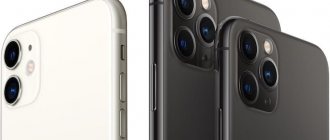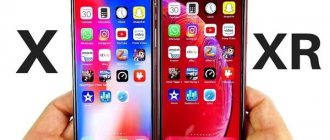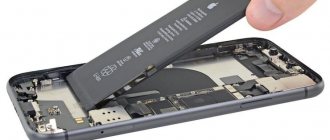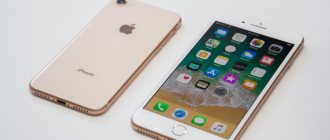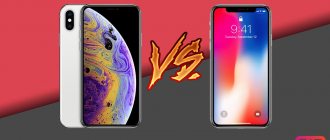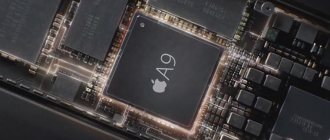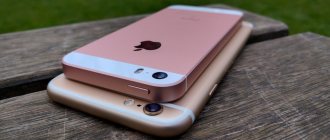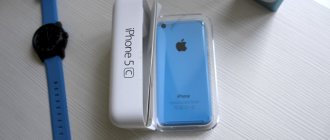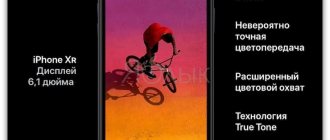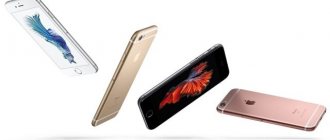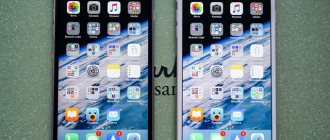Apple's latest iPhone phones, as always, offer a number of updates, as well as new prefixes in model names. The iPhone 11 replaces the iPhone XR, while the iPhone 11 Pro replaces the iPhone XS and the iPhone 11 Pro Max replaces last year's iPhone XS Max.
If you've decided to buy a new iPhone or are planning to upgrade, you'll be interested to see what Apple has to offer this year compared to the last two. So, brew yourself a cup of tea and sit back while I try to show all the differences in this Apple iPhone 11 Pro vs iPhone XS vs iPhone X comparison.
Characteristics of iPhone 11 Pro vs iPhone XS vs iPhone X
| Peculiarities | iPhone 11 Pro | iPhone XS | iPhone X |
| Size and weight | 144?71.4?8.1 mm, 188 grams | 143.6?70.9?7.7 mm, 177 grams | 143.6?70.9?7.7 mm, 174 grams |
| Screen size | 5.8-inch Super Retina XDR OLED | 5.8-inch Super Retina AMOLED | 5.8-inch Super Retina AMOLED |
| Screen resolution | 2436×1125 pixels (458 ppi) | 2436×1125 pixels (458 ppi) | 2436×1125 pixels (458 ppi) |
| operating system | iOS 13 | iOS 13 | iOS 13 |
| ROM | 64/256/512 GB | 64/256/512 GB | 64/256 GB |
| MicroSD slot | No | No | No |
| CPU | Apple A13 Bionic | Apple A12 Bionic | Apple A11 Bionic |
| RAM | 6 GB (guess) | 4 GB | 3 GB |
| Cameras | Triple: 12 MP, ultra-wide with telephoto lens. Front: 12MP TrueDepth | Dual: 12 MP on the back. Front: 7MP TrueDepth HD | Dual: 12 MP on the back. Front: 7MP TrueDepth HD |
| Video recording | 4K up to 60 fps, 1080p at 240 fps | 4K up to 60 fps, 1080p at 240 fps | 4K up to 60 fps, 1080p at 240 fps |
| Bluetooth version | 5.0 | 5.0 | 5.0 |
| Ports | Lightning | Lightning | Lightning |
| Fingerprint's scanner | No | No | No |
| Security | IP68 | IP68 | IP67 |
| Battery | Up to 18 hours of video playback, fast charging (18W device), Qi wireless charging | 2658 mAh, fast charging (15W device sold separately), Qi wireless charging | 2716 mAh, fast charging (15W device sold separately), Qi wireless charging |
| Case colors | Midnight Green, Space Grey, Silver, Gold | Space Grey, Silver, Gold | Space Grey, Silver |
| Starting price | 999 $ (65 thousand rubles) | 999 $ (65 thousand rubles) | 999 $ (65 thousand rubles) |
iPhone XS vs iPhone X – design, protection
It is difficult to distinguish smartphones purely visually. They really have the same glass body and steel frame, the same size of the “bangs” and the location of the main camera. There are only two options to distinguish smartphones: the first is to weigh (iPhone X is 3 grams heavier), the second is to buy an iPhone XS in gold color (“ten” is simply not available in this color). Otherwise, they neglected the design. When it comes to protection, smartphones differ: the iPhone XS received full protection from dust and moisture according to the IP68 standard, while the iPhone X has a modest IP67 protection protocol - the smartphone will only survive a short-term immersion in fresh water. In general, if you are worried about the safety of your smartphone, then the iPhone XS is worth buying only because of its ability to withstand various liquids: juices, saline solutions, carbonated drinks and alcohol.
Design and durability
The designs of the iPhone 11 Pro, iPhone XS and iPhone X are clearly similar; you'll have to look closely to tell them apart. Each of the smartphones has a 5.8-inch screen with thin bezels and a large notch at the top. All of them received a stainless steel frame and glass backs. But the square camera module on the back of the 11 Pro makes it stand out, although the model is also offered in a green variant. The new iPhone is slightly larger and heavier than its predecessors. As for the iPhone XS and iPhone X, they are identical.
There are significant improvements in security. The iPhone X could withstand immersion of up to 1 m for up to 30 minutes. The iPhone XS increased it to 1 hour, and the iPhone 11 Pro lowered the depth to 2 meters. Apple also demonstrated that the new iPhone can withstand a drop test, but I still recommend using cases to avoid problems.
Winner: Apple iPhone 11 Pro
Design
Design is something that hasn't changed at all about the phone. The new device only received a new color, but in terms of material, assembly, arrangement of elements, size - everything remained the same. The surface of the iPhone is made of glass, which, according to company representatives, is the most durable of all those used in mobile phones . Numerous tests of the previous device (there are already crash reviews of the iPhone XS) show that glass always remains glass, and when dropped from a height of 1.75 - 1.8 meters, it breaks on a hard surface very easily. In defense, it is worth saying that without a case and when worn with any objects, the device does not become scratched. In this regard, everything is great.
On a note! There were rumors that the metal frame peeled off with use, but these were only rumors, since real reviews did not mention anything like that.
Visually, the 2022 phone is no different from the 2022 model. It has exactly the same design, a display that occupies the entire front surface, a unibrow. Despite criticism and jokes about this newfangled element, the company did not get rid of it, and there is an opinion that this will happen only in 2022 on the next device, which will represent the new generation. In terms of control, everything is typical:
- the right side received a power button;
- left – volume and turning on silent mode;
- the upper end is traditionally empty;
- the bottom one is used to connect charging and speakers;
- On the back panel there is a vertical camera and flash.
In other words, it is impossible to visually distinguish XS from X. The new model received a gold color, which had not previously been used in Apple technology. It is more rich and glossy. This was achieved through new paint application technology. There is no point in delving into the painting process, the fact is that the color is different, and this is probably good. Many note that the new gold one looks more elegant than the old “gypsy” version.
The sensations from use remained exactly the same as from the iPhone X. And what difference could it make if the phones are made as carbon copies? You can only notice the differences when switching to a new product from older models, because compared to the iPhone 8, there is a difference not only in design, but also in control. There is no leader in the design comparison since everything is the same, but the iPhone XS gets half a point for the new color. Thus, the score becomes 1:0.5, the anniversary device remains the leader.
Smartphone displays
Apple pioneered superior OLED technology in the displays of the iPhone X. It remains unchanged in the 5.8-inch panel of the iPhone XS. The iPhone 11 Pro received a screen of the same size with the same resolution of 2436×1125 pixels, but Apple increased the maximum brightness and contrast.
You'll also notice a slight difference when viewing HDR content, but in most scenarios, the display on the iPhone XS and iPhone X is still great.
Winner: Apple iPhone 11 Pro
iPhone XS comparison with iPhone X – a few more differences
Now let's go over the minor differences between smartphones:
- The iPhone XS is available in 64GB/128/256GB versions, while the iPhone X can only be purchased in two variations – 64GB or 256GB.
- The new processor will make Face ID work even faster.
- iPhone XS received a new NFC module that works without opening a special application.
- Information has appeared that the wireless charging speed of the iPhone XS is higher than that of the iPhone X, but we do not know the exact numbers.
- The iPhone XS does not come with an audio adapter.
Camera comparison
If you're looking for a significant improvement in the iPhone 11 Pro, you'll find it here. The iPhone XS and iPhone X had identical camera sets, combining a 12-megapixel primary lens with f/1.8 aperture and a secondary 12-megapixel telephoto lens with f/2.4 aperture. They also had a 7-megapixel camera on the front, coupled with Face ID.
The iPhone 11 Pro was equipped with a triple camera module, including a 12-megapixel main lens with an f/1.8 aperture, a 12-megapixel ultra-wide lens with an f/2.4 aperture and a 120-degree field of view, as well as a 12-megapixel telephoto lens with an f/2 aperture ,0.
The new ultra-wide-angle lens allows you to take much wider shots, capturing four times the scene. The new telephoto lens's large aperture provides better low-light performance. The iPhone 11 Pro also boasts a 12-megapixel front-facing camera.
Winner: Apple iPhone 11 Pro
Camera specifications
We all love high-quality photographs. Let's compare the parameters that determine them.
| iPhone X | iPhone XS | |
| Main camera | ||
| Matrix resolution | 12 MP | 12 MP |
| Digital zoom | 2x optical zoom; 10x digital zoom | 2x optical zoom; 10x digital zoom |
| Front-camera | ||
| Matrix resolution | 7 MP | 7 MP |
We found no differences in the basic characteristics of the cameras. The difference may be in additional functions - see the corresponding section of the review.
Hardware performance
Apple updates its processors every year, making them faster and more efficient. The iPhone 11 Pro has the latest A13 Bionic chip, which is superior to the A12 Bionic in the iPhone XS, which in turn is better than the A11 Bionic in the iPhone X.
The A13 is approximately 20% faster and consumes 40% less power than the A12. Will you feel a noticeable difference? It's a moot point because the iPhone X is still fast, but if you upgrade from it to the 11 Pro you'll feel much smoother. At the same time, the iPhone XS has 4GB of RAM, so it is more capable of multitasking than the X, which makes do with 3GB. I have speculated that the 11 Pro has more RAM (6GB) but this is not confirmed yet since Apple is not revealing all the details yet, we will have to wait.
Winner: Apple iPhone 11 Pro
Protection from moisture and dust
The iPhone X had IP67 waterproof protection. In the new model, this figure has increased to IP68, that is, now the device can be located at a depth of up to two meters for about half an hour, and dust will never get under the case. Protection extends not only to water; the phone can be filled with coffee, juice and other liquids, and then washed under the tap, and everything will work as it should. Also, the IP68 standard does not limit the owner to only two meters. This is the recommended value, but in fact the phone will survive a deeper dive, but you should not dive with the XS, it will be overkill. To be fair, it should be noted that not every user will decide to undergo water procedures with a device that costs one hundred thousand rubles, because “it suddenly leaks” has not been canceled. Half the point goes back to XS. The score is 1:6.
Special Features
The improved camera is the main feature of the iPhone 11 Pro, but there are a few other interesting things that set it apart from the iPhone XS and iPhone X. Perhaps the most important is support for Wi-Fi 6 frequencies, which will provide faster download speeds once you get such an accessible network.
There's also ultra-wideband technology that enables spatial awareness, which is set to provide "direction-oriented suggestions" for AirDrop in iOS 13.1. It may turn out to be a convenient new feature.
Winner: Apple iPhone 11 Pro
Camera
An important point that always worries users is the camera. You can do anything with the processor and improve its performance a million times, but a weak camera will put an end to the device. At first glance, the iPhone XS is no different in numbers from its opponent. However, there have been several improvements that allow you to get better photos . In short, the pixel depth has changed, a new image processor has appeared, and a new mode has been introduced - Smart HDR.
The main camera consists of two matrices. Both have optical stabilization, 2x optical zoom and 10x digital zoom. All this is typical for the iPhone X, but what has changed and is not included in the specifications is that the pixel size has become 1.4 microns instead of 1.2 microns. This means that more information is stored in it, which means the picture comes out better. Despite the fact that this indicator is not revolutionary and has been used by many manufacturers for a long time, for the XS it gave a significant improvement in pictures.
The second point is the best processor, which is built into the main chipset. There are no details about it, since Apple believes that no one will understand what the essence of its work is, but they promise serious work on the pictures and again better quality.
If we talk about program modes, there has been an improvement in the Bokeh effect, as well as shooting portraits with the effect of changing the depth of field. In fact, it turns out that the difference in shades becomes clearer. The background is noticeably different from the object, as are the transitions between them. In addition, after taking a portrait, the user can use a special slider to adjust the depth of field, which makes it possible to take more impressive photographs.
Smart HDR technology was mentioned above; in fact, the new processor allows you to make dark areas even darker and light areas lighter. HDR quality is getting better.
Among the significant changes, the front camera received the same mode for changing the depth of field in portraits, as well as improved video stabilization. The selfie matrix has a resolution of 7 megapixels and a wide viewing angle. Selfies come out beautiful.
The device really began to take better photos, and the difference with the iPhone X is noticeable. Reviews of the previous device said that the matrix is good, but in a number of parameters it is inferior to its opponents. Now the camera shoots at the same level. The same applies to video recording and sound on video. The score is 1:7.
Battery autonomy
Battery life is another thing Apple doesn't reveal, but it does say the iPhone 11 Pro can last four hours longer than the XS. This is most likely due to the more efficient processor rather than any increase in battery size. Both the iPhone XS and X support fast charging up to 15W, but this device is not included in the box and must be purchased separately. Luckily, Apple saw fit to include an 18W charger in the box with the 11 Pro. All three devices have Qi wireless charging.
Winner: Apple iPhone 11 Pro
Battery
The autonomy of Apple technology has always been a matter of numerous debates and discussions. It's no secret that it's normal for an iPhone to be on charge in the middle of the working day. The popularity of cases with a built-in battery for this equipment has always been at a high level, and the company decided to change this state of affairs. The XS has already been called the long-lived iPhone. It is capable of working for 23 hours under load, and if you use the device less harshly, it will last two days . During calls, the user can count on 20 hours of work.
Important! Fast charging support allows you to reach 50% in 30 minutes. It should be remembered that a set of accessories for this will have to be purchased separately.
The battery capacity in the XS is 2658 mAh, which is slightly less than in the X (2700 mAh). At the same time, autonomy has increased significantly. The manufacturers themselves talk about a 30-minute increase, but in fact the figures turned out to be higher. The score is 1:5.5.
iPhone 11 Pro price and availability
The iPhone 11 Pro is a replacement for the iPhone XS, which succeeded the iPhone X. Apple no longer sells phones older than two years, although you can still find them elsewhere. Today there is also a thriving market for used iPhones. The price for 11 Pro starts at $999 (65 thousand rubles). Like its predecessors in the past, from September 20 the smartphone will be available in all major networks and small dealers.
Face ID
This technology was implemented in the tenth smartphone, but now it works faster. This was achieved thanks to the new processor. As before, the face is scanned using 30 thousand points, but the process is faster. The model will allow you to make purchases faster, quickly unlock the screen and generally work more accurately. However, it is quite difficult to notice a significant difference between the work in the two devices.
Important! The phone understands a face regardless of its position in space: you can sit, stand, lie down, run. But what didn’t appear in the device, and this is probably a minus – as before, the device must be held vertically, otherwise face recognition will not work. Most likely, landscape orientation for unlocking will appear in the new phone.
Not a single device receives a score for this parameter, since there is no fundamentally important increase in speed. The iPhone X did the job just as well.
Apple iPhone X Screen Features and Comparison
The size of the iPhone X screen in inches almost completely corresponds to the dimensions of its body, and the front panel frames take up only half an inch of the total diagonal.
With the release of the Xr version, the line of flagship smartphones was replenished with a model with an LCD display. Which iPhone X screen is better for everyday use is a controversial question - while OLED displays provide better images and are more energy efficient, LCD is still the more affordable and durable solution.
Key characteristics of the iPhone X screen , such as display resolution and pixel density, do not directly depend on the type of matrix. However, since the Super Retina HD display is one of the selling features of the flagship, entry-level smartphones are equipped with a more modest LCD matrix with a lower resolution.
The Samsung screen installed on the iPhone X outperforms its competitors in terms of operating life, but such displays are still sensitive to contrasting images, which is the main reason for their “burn-in.”
Screen
Despite the fact that Apple claims the opposite, the screens of the newest “ten-es” and the good old “ten” are the same.
The XS Max is a different matter. For greater clarity, take a look at the comparison table below. At the same time, I propose to compare the iPhone XR panel. The latter differs quite significantly.
| XS | XS Max | XR | |
| Matrix | OLED | IPS | |
| Diagonal | 5,8 | 6,5 | 6,1 |
| Permission | 2436 x 1125 | 2688 x 1242 | 1792 x 828 |
| Pixel Density | 458 | 326 | |
| Proportions | 19,5 : 9 | ||
| Technologies | HDR, Dolby Vision, True Tone, P3 color profile, 3D Touch | True Tone, P3 color profile | |
| Contrast | 1 000 000 : 1 | 1400 : 1 | |
| Brightness | 625 cd/m² | ||
From the point of view of domestic use, the max screen is the most preferable. Despite the adaptive design of sites on the Internet, its display always fits more information than the XS panel - by about 10%.
And the new protective glass (front) has become stronger than the previous one. A formal statement from Apple that is extremely difficult to verify. I won’t and I don’t advise you to. It might be stronger, but it’s still not worth dropping your smartphone.
